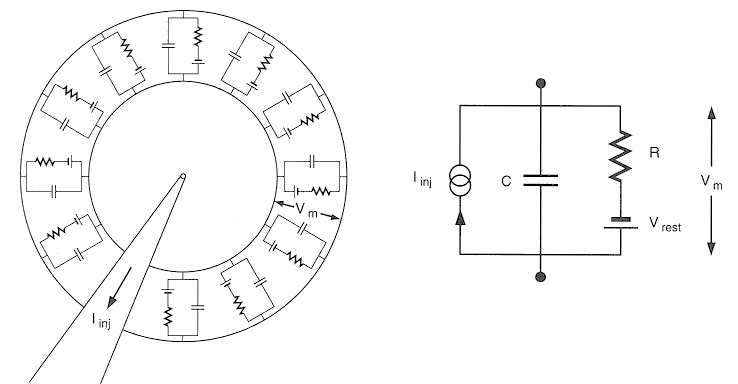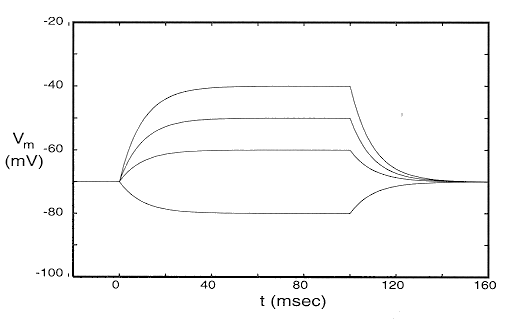

At the rest state, the ionic currents flowing through the ion channels balance each other to reach a dynamic equilibrium of zero net current, and the membrane potential as the voltage across the capacitor is the same as the rest potential of about 70 mV. But when there is an external current source as shown in the figure, either caused by a synaptic stimulus or injected from a intra-cellular microelectrode, the membrane potential will change as a function of time. According Kirchhoff's current law, the current source Iin is split into the current flowing through R and the current flowing through C:
This is the membrane equation, which is a first order ordinary
differential equation for the membrane potential Vm(t):
If we assume the external current source is a step function

As shown in the figure, after the step current into the neuron, it will respond so that its membrane potential Vm(t) will either increased (more positive, or depolarized) or decreased (more negative, or hyperpolarized) depending on the direction of the external current source Iin. But this membrane potential change always has an exponential transition, instead of an instant response.
